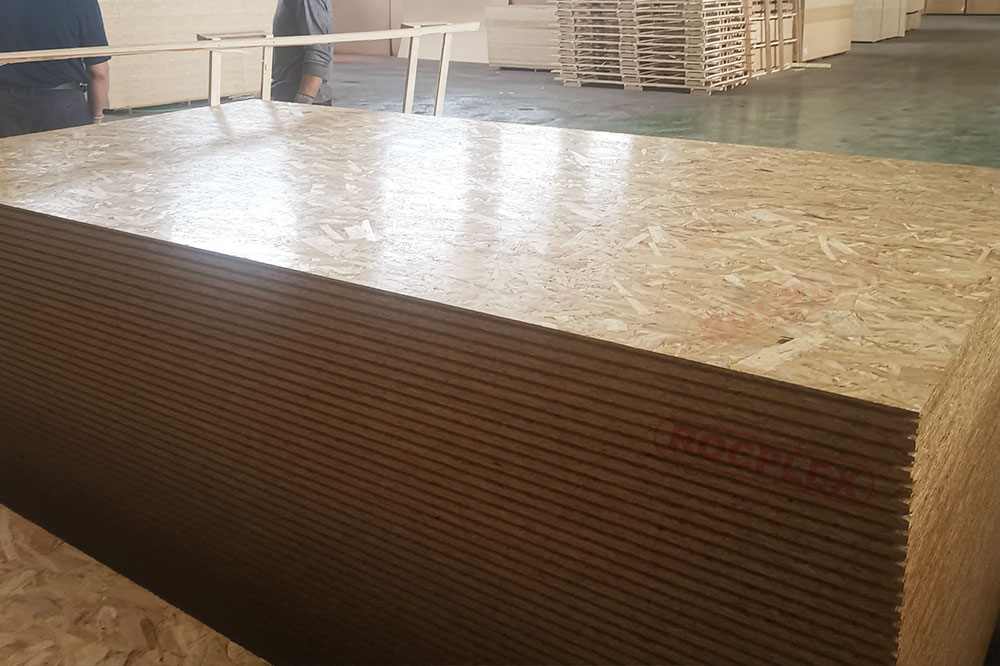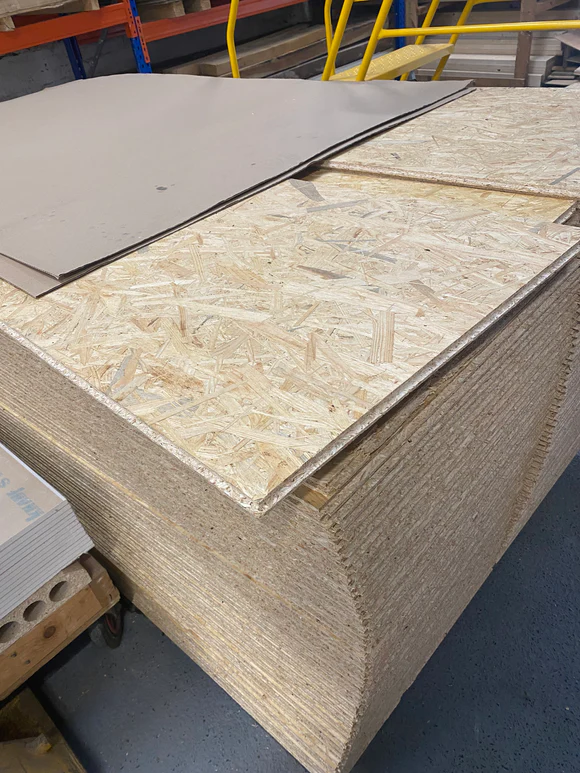Tongue-and-Groove (T&G) OSB: The Ultimate Guide
Tongue-and-Groove (T&G) OSB, When it comes to construction and woodworking, the materials you choose can make or break your project. One material that has gained significant popularity in recent years is Tongue-and-Groove (T&G) Oriented Strand Board (OSB). This versatile and durable material is used in a variety of applications, from flooring to roofing and everything in between. In this comprehensive guide, we’ll explore everything you need to know about T&G OSB, including its benefits, applications, installation tips, and much more.

What is Tongue-and-Groove (T&G) OSB?
Understanding OSB
Oriented Strand Board (OSB) is an engineered wood product made by compressing layers of wood strands with adhesives. These strands are arranged in specific orientations, which gives OSB its strength and durability. OSB is commonly used in construction for sheathing, flooring, and roofing.
The Tongue-and-Groove Design
The tongue-and-groove design is a method of fitting similar objects together, edge to edge. In the context of OSB, the tongue is a protruding edge on one side of the board that fits into a corresponding groove on the adjacent board. This design creates a tight, seamless fit that enhances the structural integrity of the installation.
Benefits of T&G OSB
1. Enhanced Structural Integrity
The tongue-and-groove design provides a more stable and secure connection between panels, reducing the risk of movement and separation. This is particularly important in flooring and roofing applications where stability is crucial.
2. Improved Load Distribution
T&G OSB panels distribute weight more evenly across the surface, making them ideal for areas that will bear heavy loads. This is especially beneficial in flooring systems where furniture, appliances, and foot traffic are common.
3. Reduced Air and Moisture Infiltration
The tight fit of T&G OSB panels minimizes gaps between boards, reducing the likelihood of air and moisture infiltration. This can help improve energy efficiency and prevent issues like mold and rot.
4. Ease of Installation
The tongue-and-groove design makes installation quicker and easier, as the panels fit together seamlessly. This can save time and labor costs, making T&G OSB a cost-effective choice for many projects.
5. Versatility
T&G OSB can be used in a wide range of applications, including subflooring, wall sheathing, roof decking, and more. Its versatility makes it a valuable material for both residential and commercial construction.
Applications of T&G OSB
1. Subflooring
T&G OSB is a popular choice for subflooring because of its strength and stability. It provides a solid base for various types of finished flooring, including hardwood, laminate, and tile.
2. Roof Decking
In roofing applications, T&G OSB provides a sturdy and reliable surface for shingles and other roofing materials. Its tight fit helps prevent leaks and improves the overall durability of the roof.
3. Wall Sheathing
T&G OSB can be used as wall sheathing to provide additional strength and stability to the structure. It also helps improve insulation and reduce air infiltration.
4. Ceiling Panels
T&G OSB is also used in ceiling applications, where it provides a strong and durable surface that can support insulation and other ceiling materials.
5. DIY Projects
Beyond construction, T&G OSB is a favorite among DIY enthusiasts for projects like shelving, furniture, and more. Its ease of use and affordability make it a versatile material for creative endeavors.
Installation Tips for T&G OSB
1. Proper Acclimation
Before installation, allow the T&G OSB panels to acclimate to the environment where they will be installed. This helps prevent warping or shrinking after installation.
2. Use the Right Fasteners
Choose the appropriate fasteners for your project, such as nails or screws, and ensure they are the correct length and type for the specific application.
3. Follow Manufacturer Guidelines
Always follow the manufacturer’s guidelines for installation, including spacing, fastening patterns, and any other recommendations. This ensures the best performance and longevity of the material.
4. Ensure a Level Surface
Before installing T&G OSB, make sure the surface is level and free of debris. This will help ensure a smooth and even installation.
5. Seal the Edges
To further reduce the risk of moisture infiltration, consider sealing the edges of the T&G OSB panels with a waterproof sealant.
Maintenance and Care
1. Regular Inspections
Periodically inspect T&G OSB installations for signs of damage, such as warping, cracking, or moisture infiltration. Address any issues promptly to prevent further damage.
2. Keep it Dry
While T&G OSB is designed to resist moisture, it’s important to keep it as dry as possible. Avoid prolonged exposure to water and address any leaks or spills immediately.
3. Clean as Needed
For T&G OSB used in visible applications, such as ceilings or DIY projects, clean the surface as needed with a damp cloth and mild detergent. Avoid using harsh chemicals that could damage the material.
4. Protect from Impact
In high-traffic areas, consider using protective coverings, such as rugs or mats, to prevent damage from heavy furniture or foot traffic.
Environmental Considerations
1. Sustainable Sourcing
Many manufacturers of T&G OSB use wood from sustainably managed forests, making it an environmentally friendly choice. Look for certifications like FSC (Forest Stewardship Council) to ensure responsible sourcing.
2. Recyclability
OSB is recyclable, and many recycling centers accept it. This reduces waste and promotes a circular economy.
3. Low VOC Emissions
T&G OSB typically has low volatile organic compound (VOC) emissions, contributing to better indoor air quality compared to some other building materials.
4. Energy Efficiency
The tight fit of T&G OSB panels can improve the energy efficiency of a building by reducing air infiltration, leading to lower heating and cooling costs.
Comparing T&G OSB to Other Materials
1. T&G OSB vs. Plywood
Both T&G OSB and plywood are popular choices for sheathing and subflooring. While plywood is often considered stronger and more moisture-resistant, T&G OSB is generally more cost-effective and provides a tighter fit due to its tongue-and-groove design.
2. T&G OSB vs. Particleboard
Particleboard is another engineered wood product, but it is generally less durable and moisture-resistant than T&G OSB. T&G OSB is a better choice for structural applications where strength and stability are important.
3. T&G OSB vs. Solid Wood
Solid wood is a traditional building material, but it can be more expensive and prone to warping and shrinking compared to T&G OSB. T&G OSB offers a more stable and cost-effective alternative for many applications.
Cost Considerations
1. Material Costs
T&G OSB is generally more affordable than plywood and solid wood, making it a cost-effective choice for many projects.
2. Installation Costs
The ease of installation of T&G OSB can reduce labor costs, as it requires less time and effort to install compared to some other materials.
3. Long-Term Savings
The durability and stability of T&G OSB can lead to long-term savings by reducing the need for repairs and replacements.
4. Budgeting Tips
FAQs About T&G OSB
1. What is the difference between OSB and T&G OSB?
OSB is a general term for oriented strand board, while T&G OSB refers to OSB panels that have a tongue-and-groove design. The tongue-and-groove design provides a tighter fit and enhanced stability.
2. Can T&G OSB be used for exterior applications?
Yes, T&G OSB can be used for exterior applications like roof decking and wall sheathing. However, it should be properly sealed and protected from prolonged exposure to moisture.
3. How do I cut T&G OSB?
T&G OSB can be cut using a circular saw, table saw, or handsaw. Be sure to use a sharp blade and follow safety precautions when cutting.
4. Is T&G OSB suitable for flooring?
Yes, T&G OSB is commonly used as subflooring due to its strength and stability. It provides a solid base for various types of finished flooring.
5. How do I maintain T&G OSB?
Regular inspections, keeping the material dry, and cleaning as needed are key to maintaining T&G OSB. Address any issues promptly to prevent further damage.
6. Can T&G OSB be painted or stained?
While T&G OSB can be painted or stained, it is typically used in structural applications where aesthetics are not a primary concern. If used in visible applications, proper preparation and finishing are important.
7. Is T&G OSB environmentally friendly?
Many T&G OSB products are made from sustainably sourced wood and have low VOC emissions, making them an environmentally friendly choice. Look for certifications like FSC to ensure responsible sourcing.
8. How long does T&G OSB last?
With proper installation and maintenance, T&G OSB can last for many years. Its durability and resistance to warping and shrinking contribute to its longevity.
9. Can T&G OSB be used in wet areas?
While T&G OSB is more moisture-resistant than some other materials, it is not waterproof. It should not be used in areas that will be consistently wet unless properly sealed and protected.
10. What thicknesses are available for T&G OSB?
T&G OSB is available in various thicknesses, typically ranging from 3/8 inch to 1 inch. The appropriate thickness depends on the specific application and load requirements.
Conclusion
Tongue-and-Groove (T&G) OSB is a versatile, durable, and cost-effective material that is suitable for a wide range of construction and DIY projects. Its unique design provides enhanced stability, improved load distribution, and reduced air and moisture infiltration, making it an excellent choice for applications like subflooring, roof decking, and wall sheathing. By following proper installation and maintenance practices, you can ensure the longevity and performance of T&G OSB in your projects.
Whether you’re a professional contractor or a DIY enthusiast, T&G OSB offers a reliable and efficient solution for your building needs. With its many benefits and applications, it’s no wonder that T&G OSB has become a popular choice in the construction industry.
By following this guide, you’ll be well-equipped to make informed decisions about using T&G OSB in your next project. Whether you’re building a new home, renovating an existing space, or tackling a DIY project, T&G OSB offers the strength, stability, and versatility you need to get the job done right.
